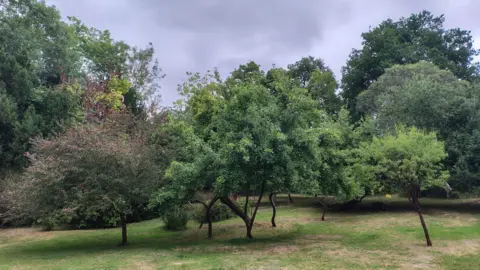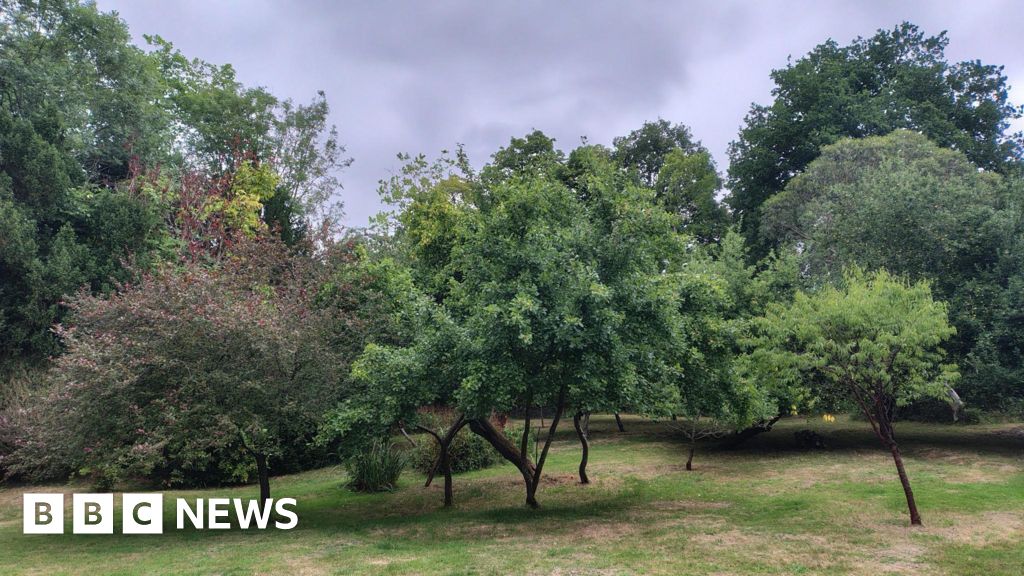Simon FurberLeatherhead and
Stuart MaisnerSouth East
 Simon Furber/BBC
Simon Furber/BBC
The spot where the woman died now has fruit trees growing
A mystery surrounding the murder of an unknown woman in the 19th Century has been kept alive in modern times largely due to a traditional folk song.
The Poor Murdered Woman ballad refers to the real tragedy on Leatherhead Common, Surrey, in 1834.
The woman’s name was never discovered, but her story has echoed through song and local memory.
Lucy Quinnell, who lives on the land where the woman was found, said: “Realising that a song was written about her is fascinating.”
On 11 January 1834, during a fox hunt on the common, the hounds refused to leave a clump of bushes.
The hunt members discovered the decomposed body of a woman, with a severe head wound, suggesting she had been murdered and left there for months.
She was buried in a pauper’s grave at the nearby Church of St Mary & St Nicholas.
The ballad’s lyrics recount the discovery, the villagers’ reaction, and the lonely burial. It ends with a moral reflection – though the woman was unknown, her killer would face divine justice.
Its authorship is attributed to Mr Fairs, a local brickmaker who witnessed the events on the common.
Ms Quinnell, an artist and storyteller, said: “I didn’t know about this woman and I live right here.
“We know very little.”
Listen: The story behind The Poor Murdered Woman
Ms Quinnell has helped to organise memorial walks and public storytelling events on the common where the body was found.
She said: “Nobody knew who she was. It is fascinating.”
Not long after the body was found a man was accused of murdering his sweetheart on Leatherhead Common but he was not found guilty.
The Poor Murdered Woman has been recorded many times over the decades.
Ms Quinnell said: “That old expression ‘immortalised in song’ is very true.
“I think it’s the song that has kept her alive and the people covering it.
“The song is the reason we know about this woman.”


